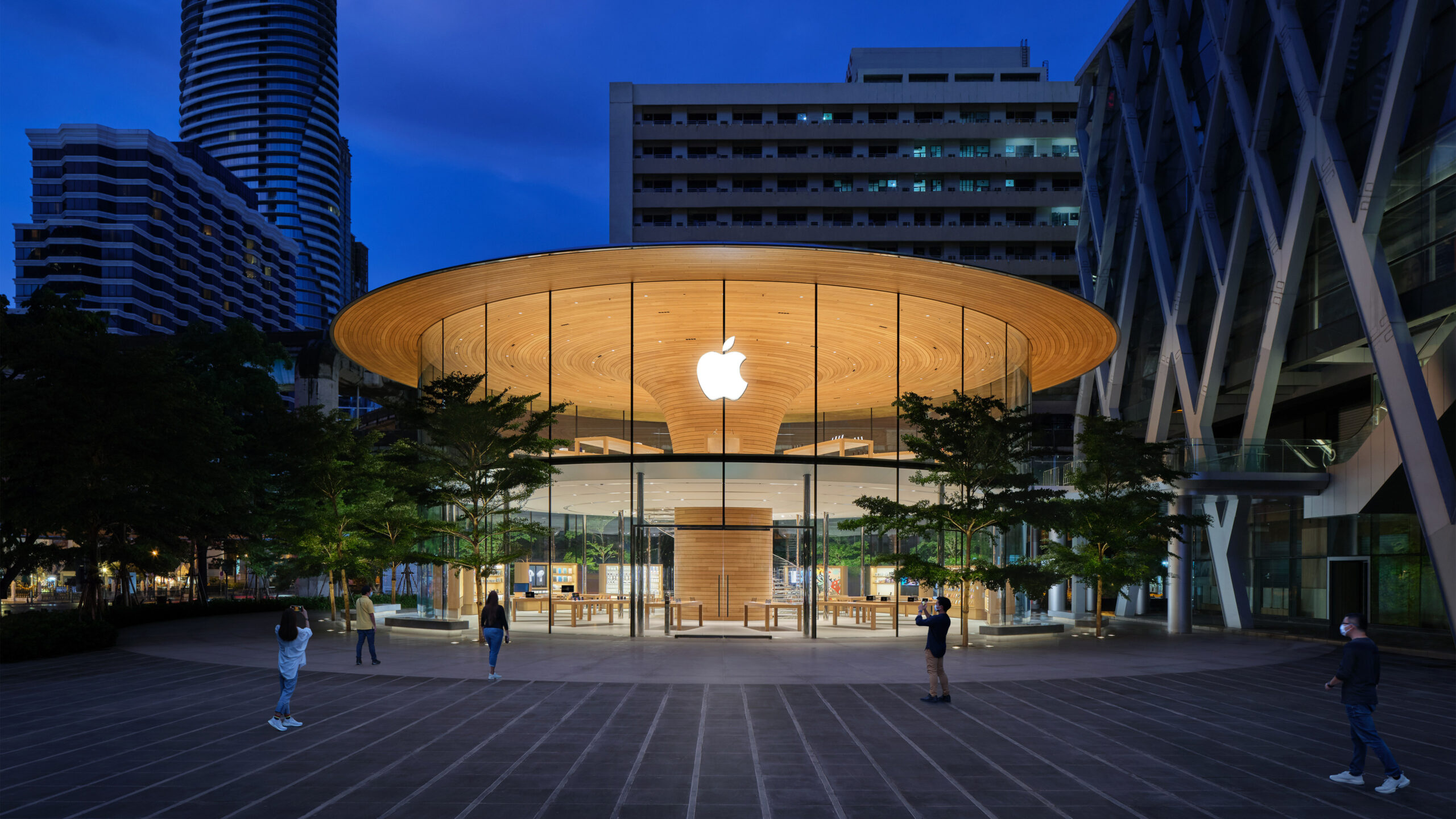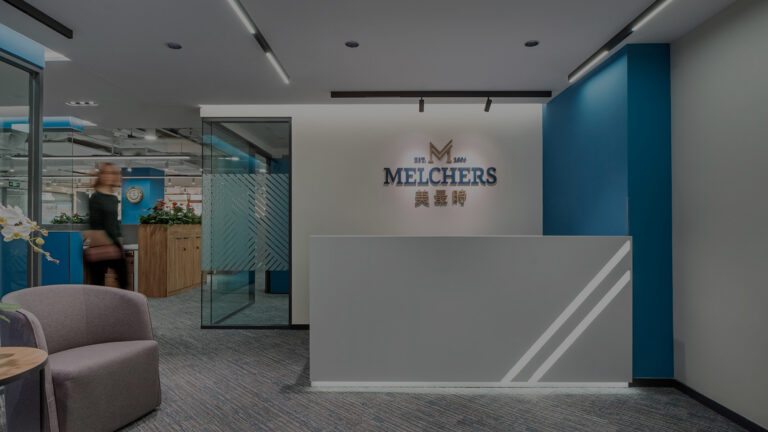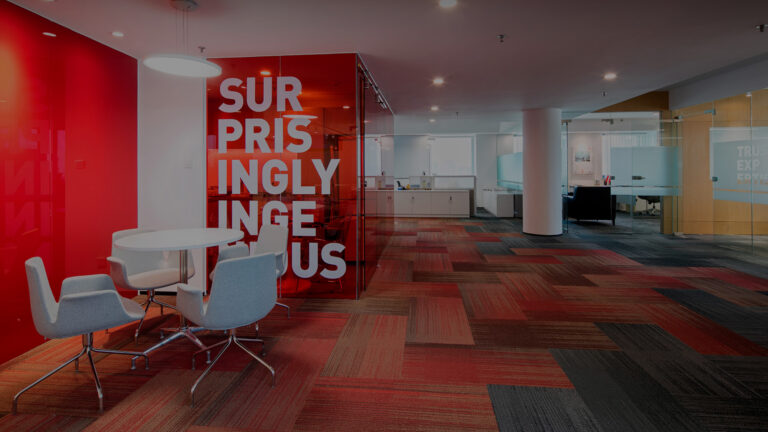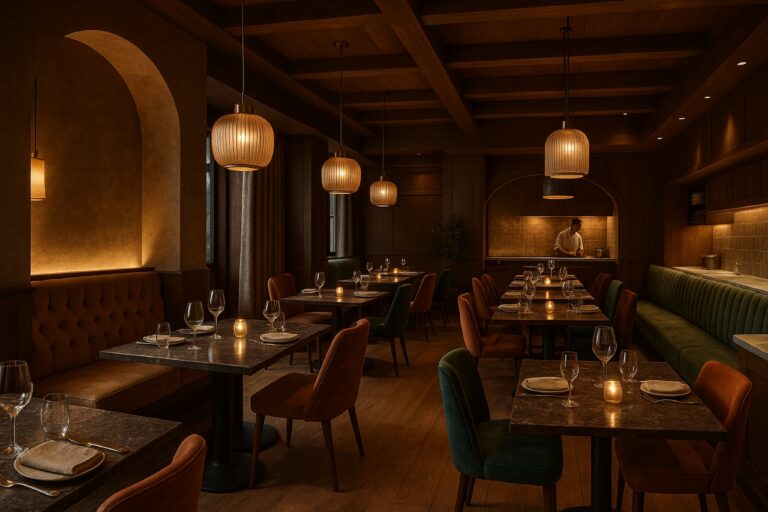We spend most of our lives inside buildings: at home, at the office, in restaurants and other facilities. Our general well-being, thoughts, and mood are shaped by the walls and features of these buildings. In this new series, we introduce environmental psychology, how to consider it when designing a retail space as well as the positive and negative effects of architecture on humans. In the first article, we commence with the fundamentals of environmental psychology, how people form their preferences and how architecture impacts our stress levels.
Environmental Psychology
The field of Environmental Psychology is dedicated to understanding how people interact with the buildings and the spaces around them. In the past, a trend was to include psychologists in the design process with a peak during the 70s. Soon after, companies lost interest in working with them because they thought that architects had enough understanding about the end-users and their needs. That means that most buildings are designed with an intellectual approach instead of an emotional one. In China, where Feng shui originated, experts think that architecture is disconnected from other disciplines and the rest of humanity.
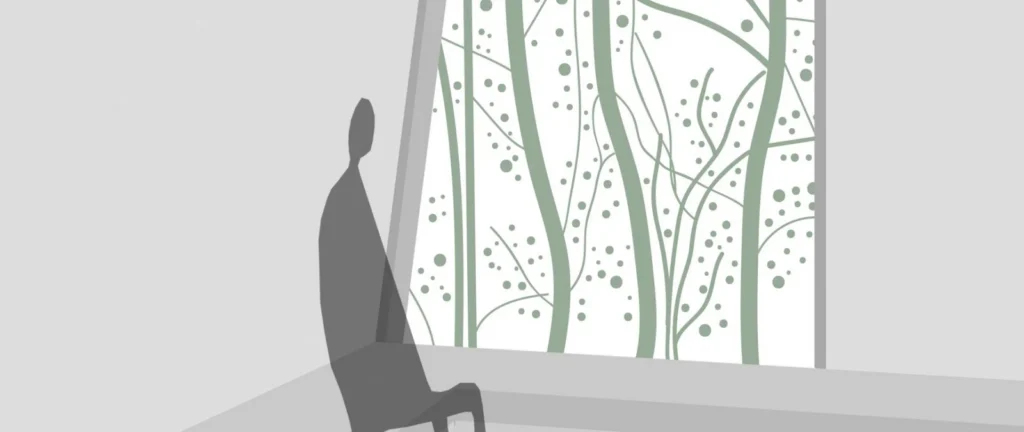
Preferences
There are multiple reasons why someone would like one space or building while someone else would dislike it. From an evolutionary point of view, human brains have been encoded to associate a sense of pleasure with objects and places that increased our chances for survival. That included food, water, shelter, and to be more specific, the layout of the savanna. Modern humans still associate shelter with pleasure but in a more subjective manner.
Environmental psychologists look at different categories when it comes to understanding people’s preferences. That includes how people perceive design elements, how intrinsic factors influence their mood, and if any social things happen in the space.
Researchers found out that people tend to prefer clean environments with less ornamentation, uncluttered spaces with an open view, and good illumination. Well-balanced, good designs do not require too much attention from people and make it easy for them to move around while promoting wellbeing in an overarching way. Researchers have also found that natural-looking patterns, naturalistic architectural spaces may evoke similar psychological benefits as interacting with nature itself.
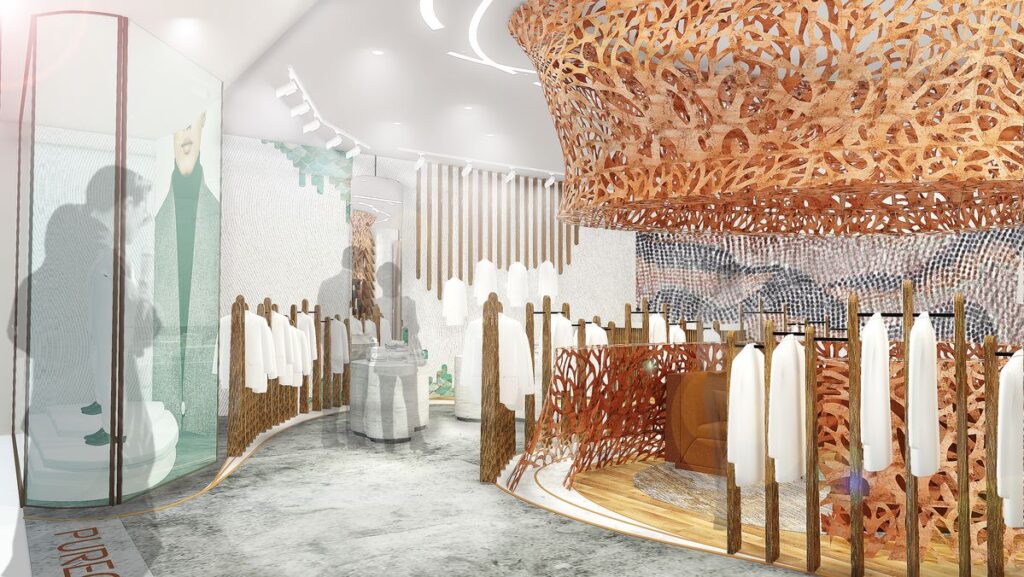
“PUREONES concept store design with high-end wood and stone flooring and ceiling in a naturally balanced interior. The colors, shapes and materials were chosen to create harmony with Chinese culture and values.”
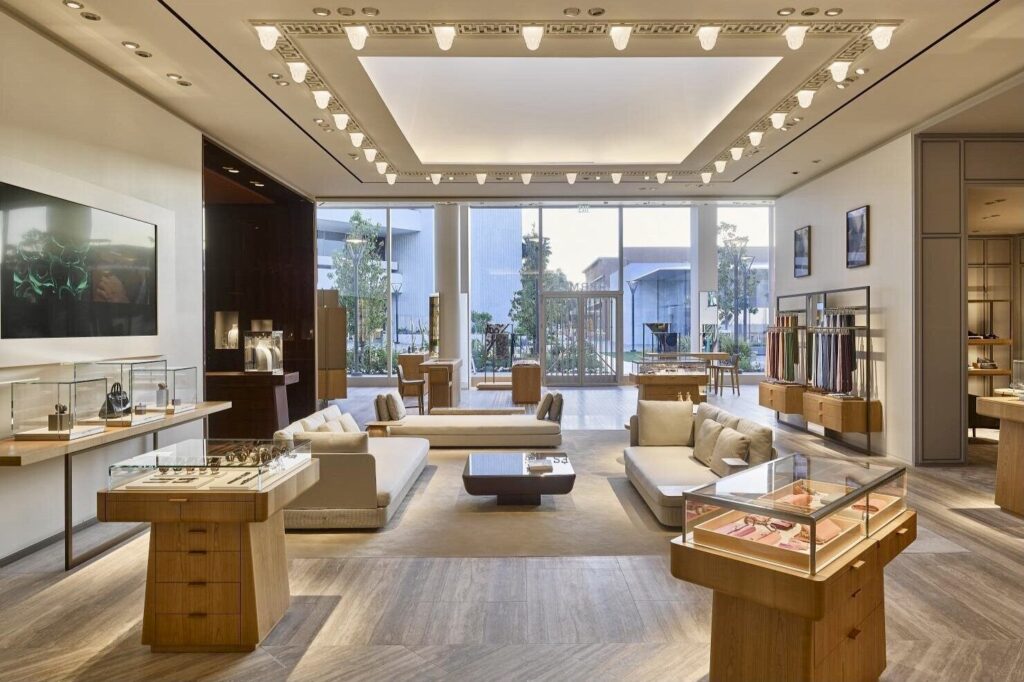
“Natural dark flooring resembles the dark surface of the earth while the brighter ceiling corresponds with the sky. This helps to create a feeling of being grounded in the natural environment.”
What is Beauty in Design?
We all know that the word “beautiful” is fundamentally subjective however, the feeling associated with it is universal. When we see something that we define as beautiful, it causes us to feel pleasure. This feeling of pleasure is a result of oxytocin, endorphins, and DHEA being released inside the brain.
Buildings with similar features as the shelters of our human ancestors, provide us with a sense of pleasure. Therefore, to incorporate these elements into the design, we need to identify and understand these characteristics and patterns our brain associates with survival attributes. These elements are mostly taken from nature. To mention a great example; Sagrada Familia by Gaudí who was influenced by his religious and metaphysical views. The treelike structures and flower-like canopies make it clear for visitors that the inspiration for the cathedral came from the forest.
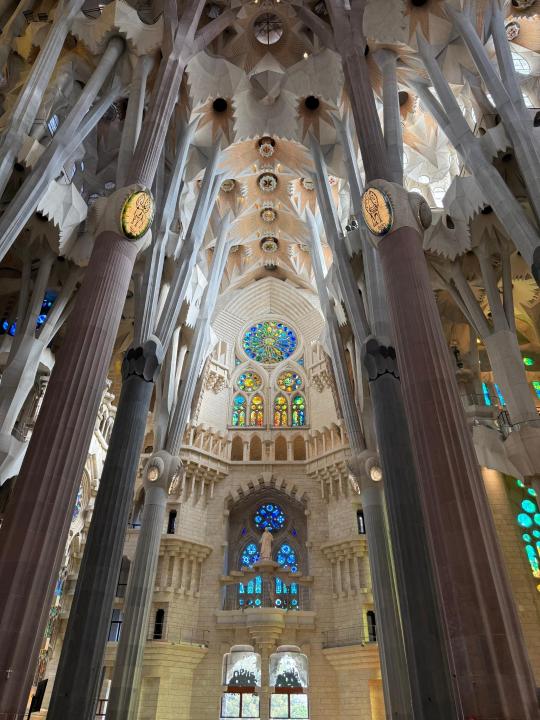
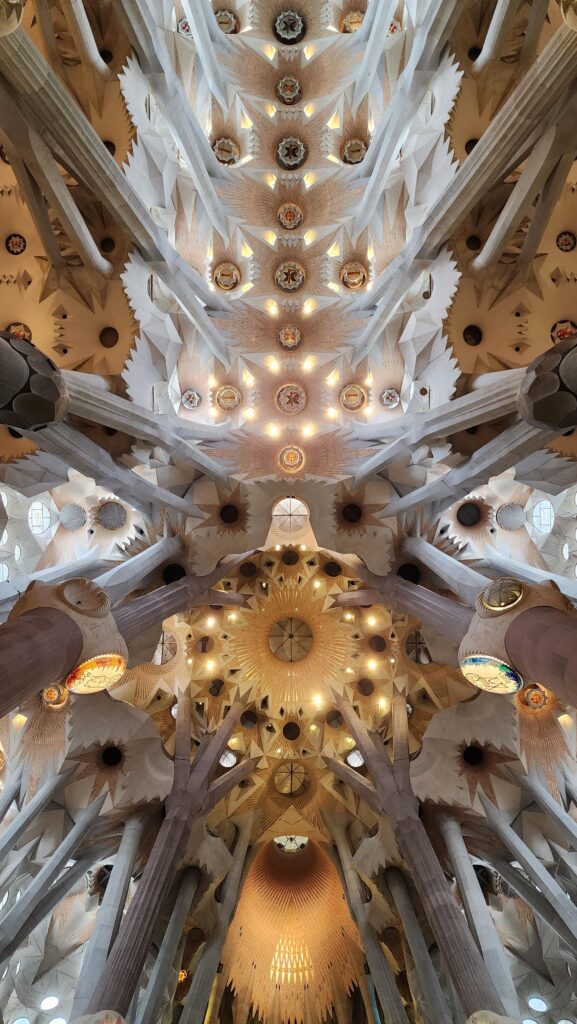
Almost every ancient civilization incorporated environmental psychology in their unique way: Feng shui in China, Vastu Shastra in India, geometric patterns in the Arab, Roman, Druid, Aborigine, and Native American architecture. Their designs were in harmony with their life and their natural environment.
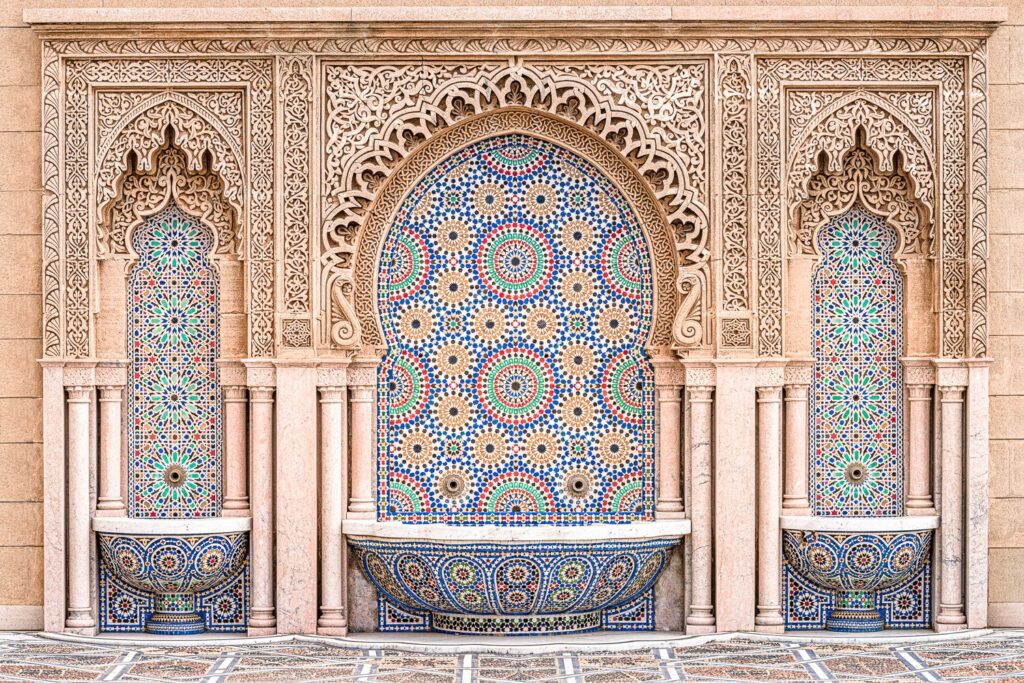
” Arab architecture features repeated patterns and non-figurative geometric or vegetal motifs. These patterns are inspired by the guidance of the Quran..”
Architecture as a Form of Stress Release?
Is it possible to use design and architecture to improve the stress level and mood of people? Nowadays, we experience stress in a very different way compared to our ancestors. For us, stress can be caused by multiple reasons and differs from person to person, ranging from traffic to a job, relationships, or seemingly trivial things. Unfortunately, stress has become a prominent factor in our modern life with an effect on our health. That is where architectural and interior design and their positive psychological effects come to the picture. The built environment has direct and indirect effects on human psychology with an impact on senses, mood, emotions, motivations, judgments, decisions, health, and participation in physical activity and community life. With the use of the right colors, shapes, patterns, and materials, retail designers can calm down, motivate and inspire visitors.
Apple, one of the retail giants always combined human emotions when designing an intelligent store experience for their customers. They emphasized creating a genuinely relaxed in-store experience, a sales-free, pressure-free place to relax and absorb. In every store, there are a lot of details to serve customers, to induce their sense of trust, relaxation, positive reinforcement, and their general mood: the layout, the decor, the pressure-free environment.
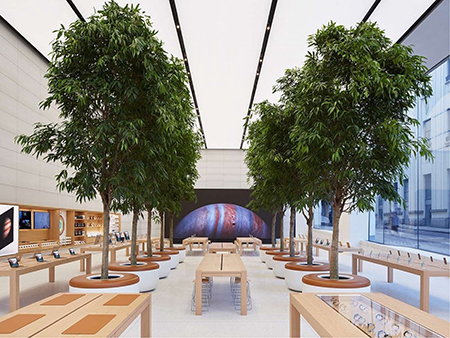
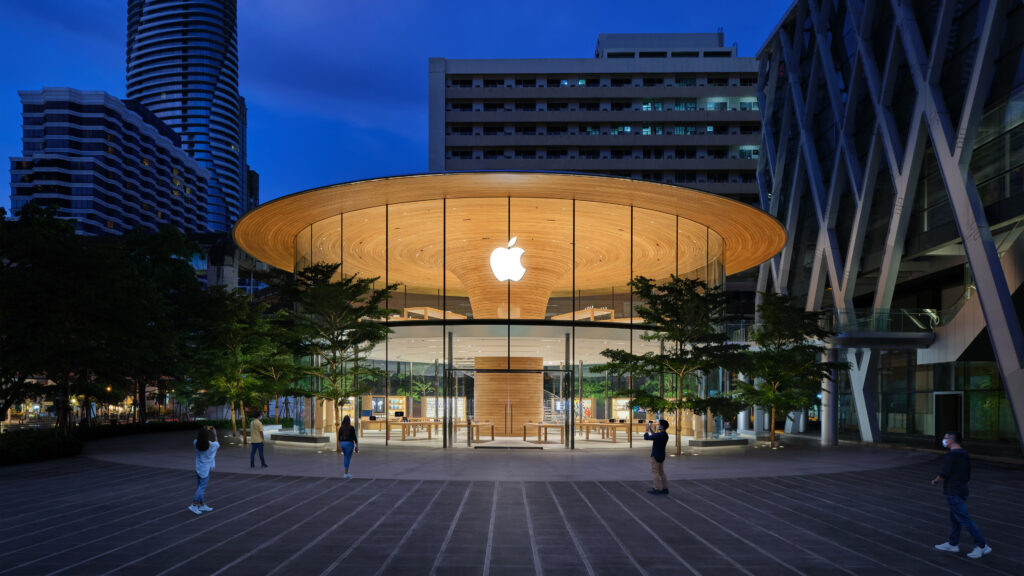
In our next article, we will further explore the field of environmental psychology and its role in our everyday, modern life. We also think that it’s essential to discuss potential mistakes as well. Besides the good cases, we will write about examples that have questionable or even contradictory effects on people.

